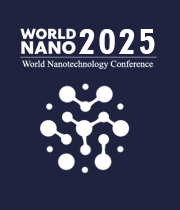Title : Efficient large area semi-transparent Dye-Sensitized Solar Cells (DSSCs) printed with DMD400 technology
Abstract:
This work presents fully printed large-area and semi-transparent Dye-Sensitized Solar Cells (DSSCs) using TiO2 nanoparticles treated with TiCl4, push-pull dye coded “D35” sensitizer, and I3−/I− redox mediator. The cells, with areas of 4 cm2 and 200 cm2, were printed using different designs: hexagonal, stripe and standards, employing a Digital Materials Deposition “DMD” printer. The favorable porosity of the film printed with DMD technology, as evidenced by Scanning Electron Microscopy (SEM), contributed to performance enhancement by increasing Open Circuit Voltage (Voc) and Fill factor (FF). The hexagonal geometry facilitated electrolyte impregnation in the TiO2 mesoporous structure, consequently boosting current density. Consequently, the hexagonal designs yielded higher photocurrent density, Voc, and FF, achieving a power conversion efficiency (PCE) of 7.05% for 4 cm2 semi-transparent DSSCs, compared to stripe (5.50%) and standard designs (5.48%). The higher performance of hexagonally shaped DSSCs is also due to lower interfacial charge recombination rates, as well as better charge transfer and collection efficiency. Photophysical measurements showed high charge transfer rate (~1.3x109s-1) in hexagonal-shaped system compared to stripe (9.8x108s-1) and standard ((9.5x108s-1) designs. Hence, our study demonstrates that this new design of printed photoanode enables simultaneous improvement in the efficiency and transparency of the DSSC device. Additionally, the printed hexagonal design reduces material consumption, presenting an innovative and appealing option for manufacturing efficient and semi-transparent DSSC devices.


